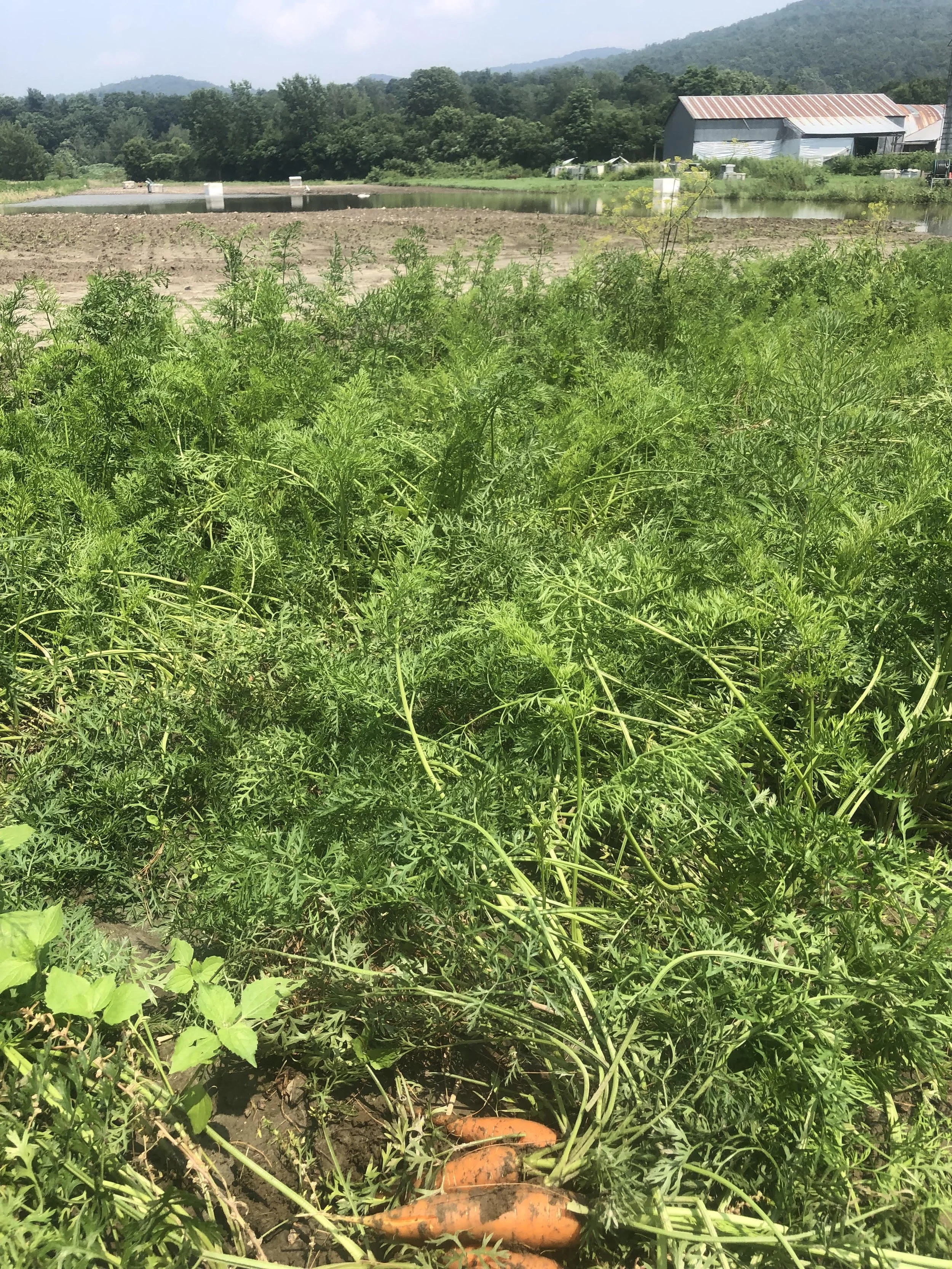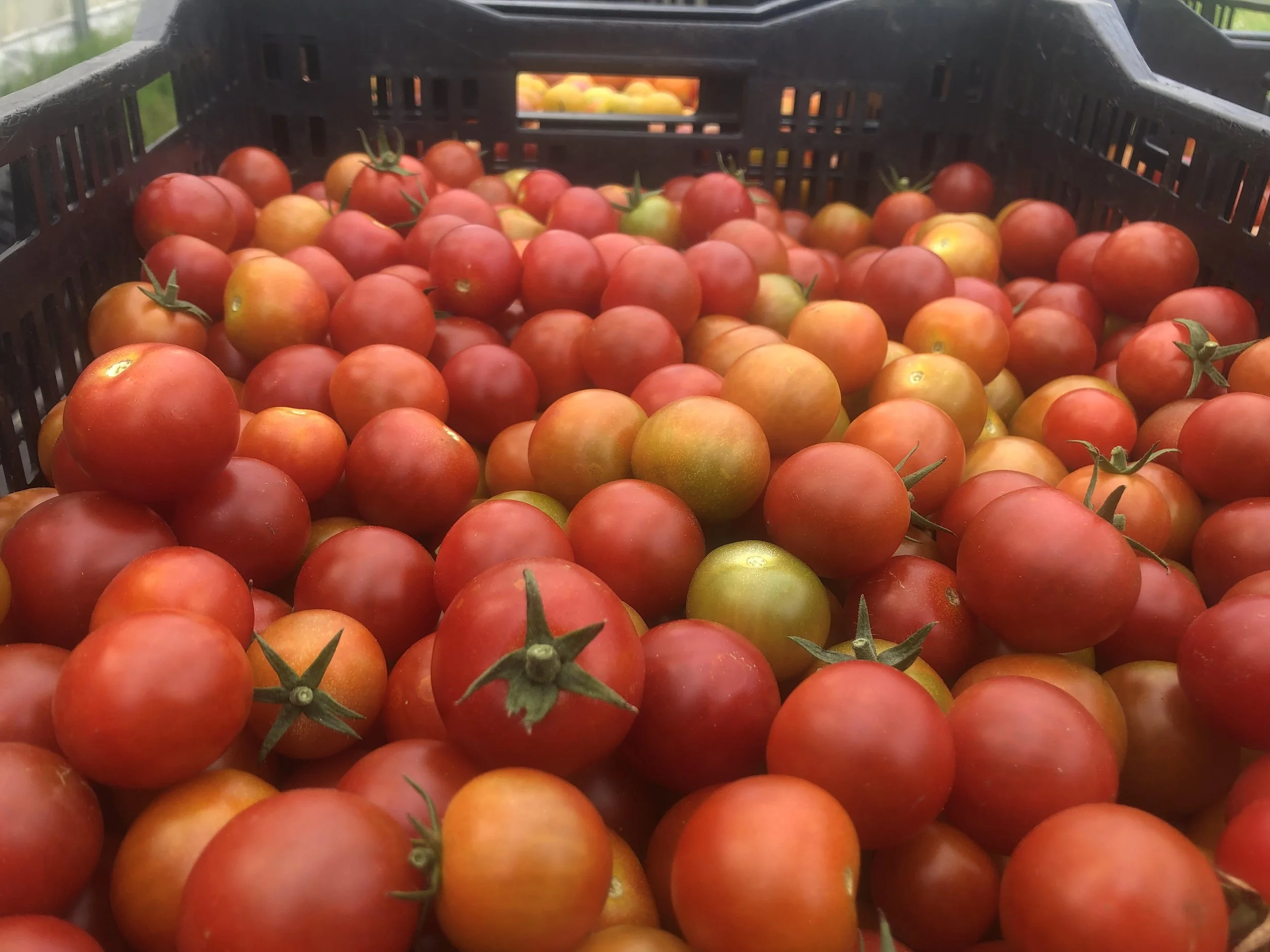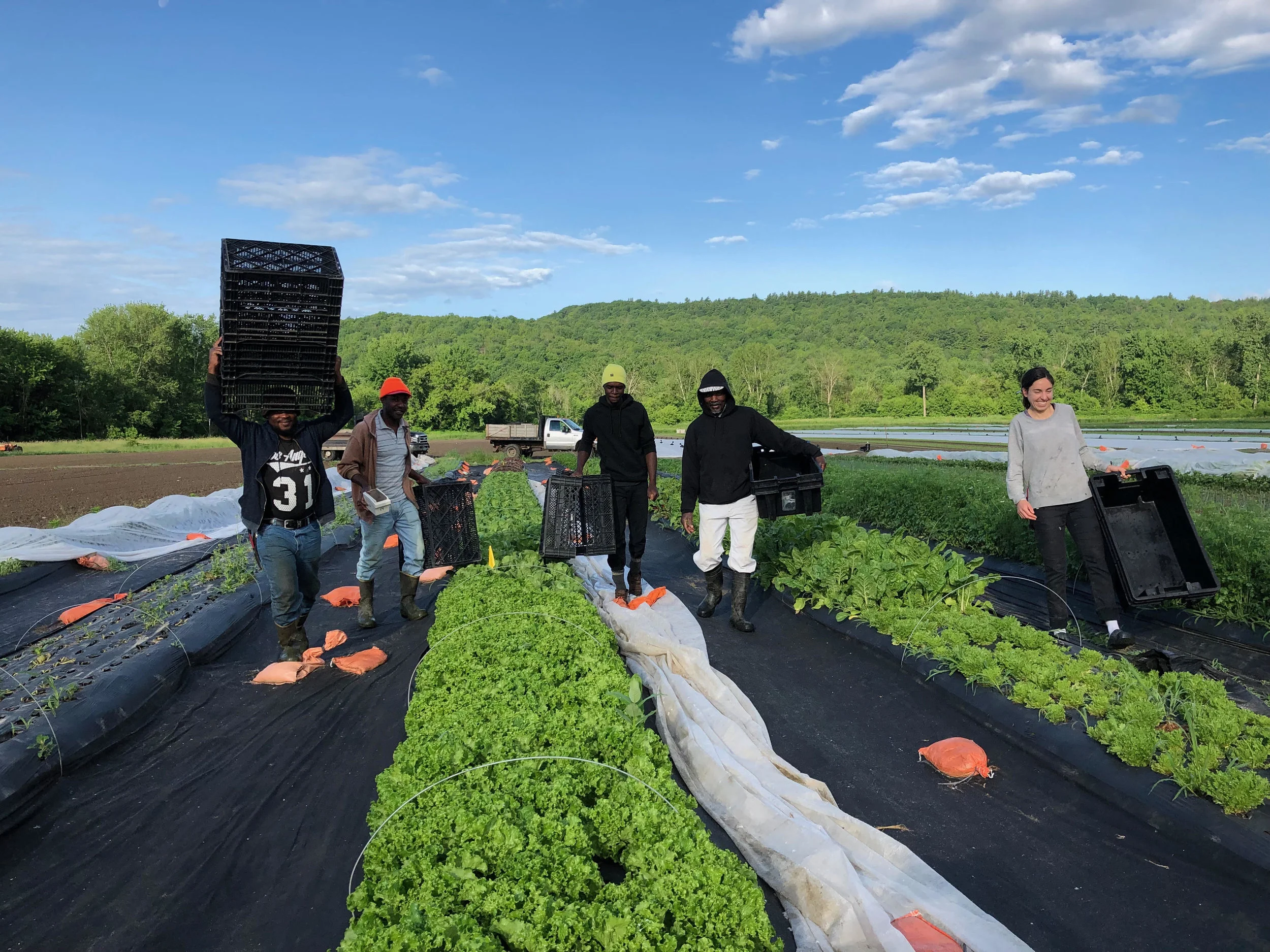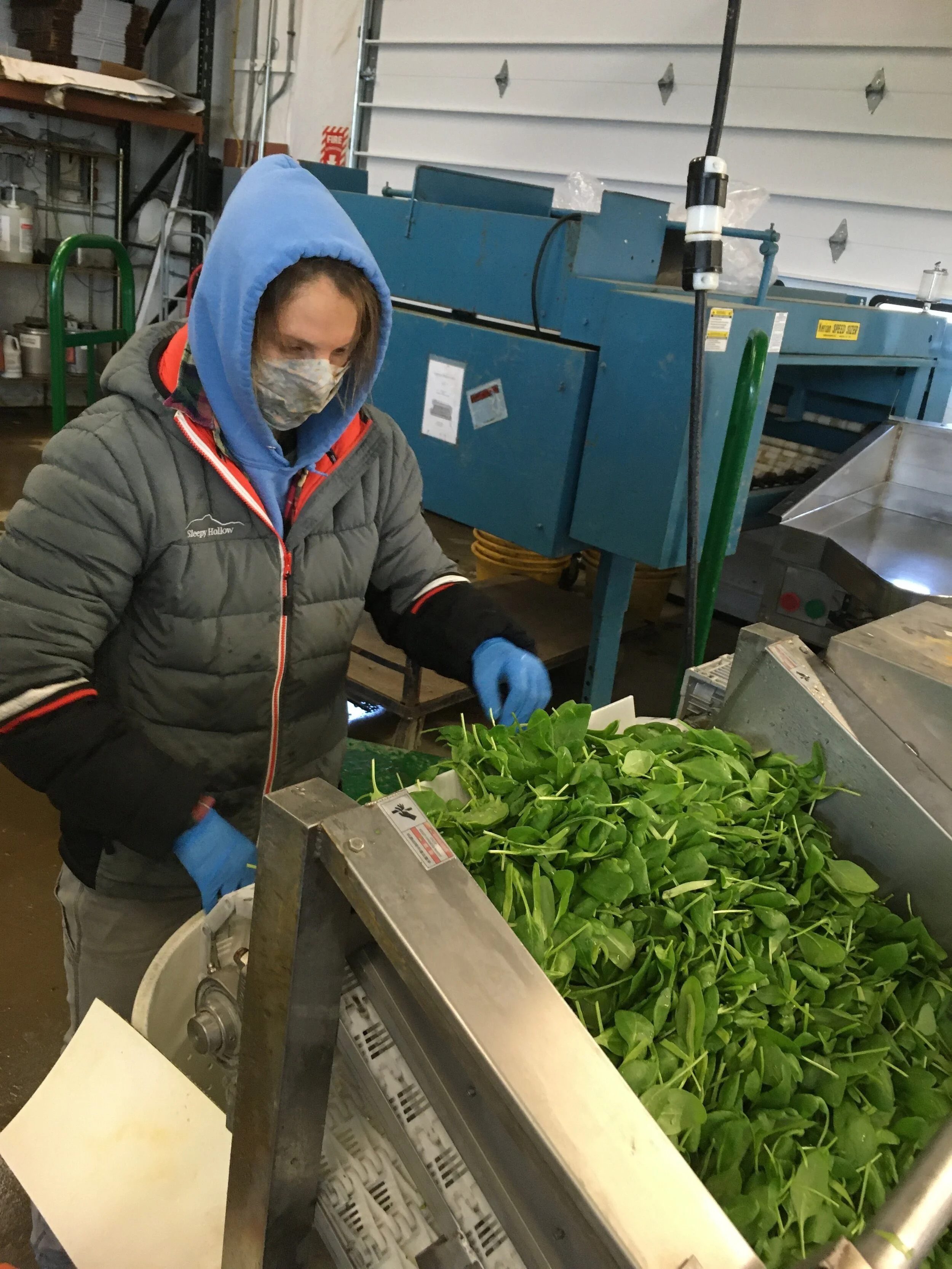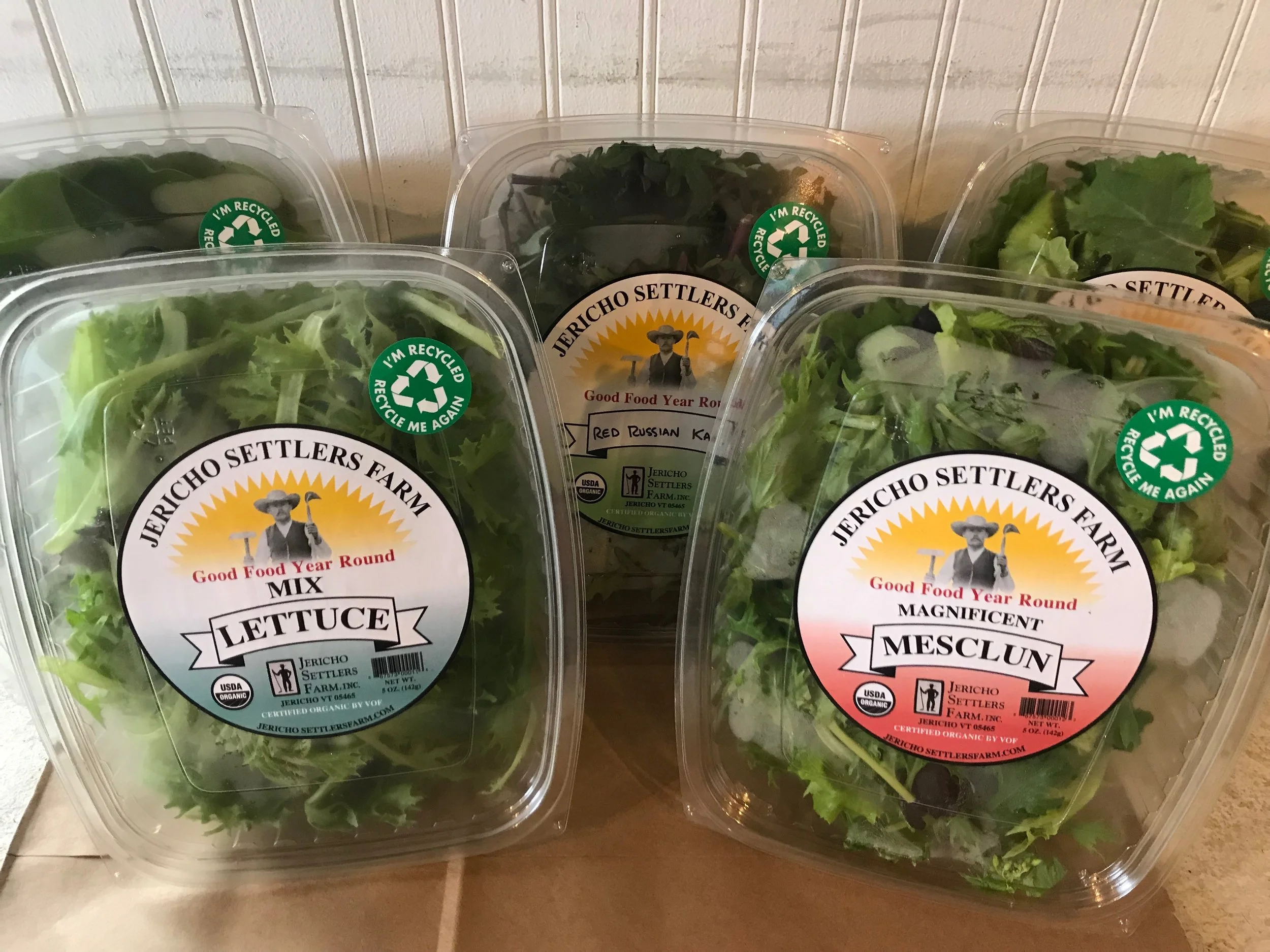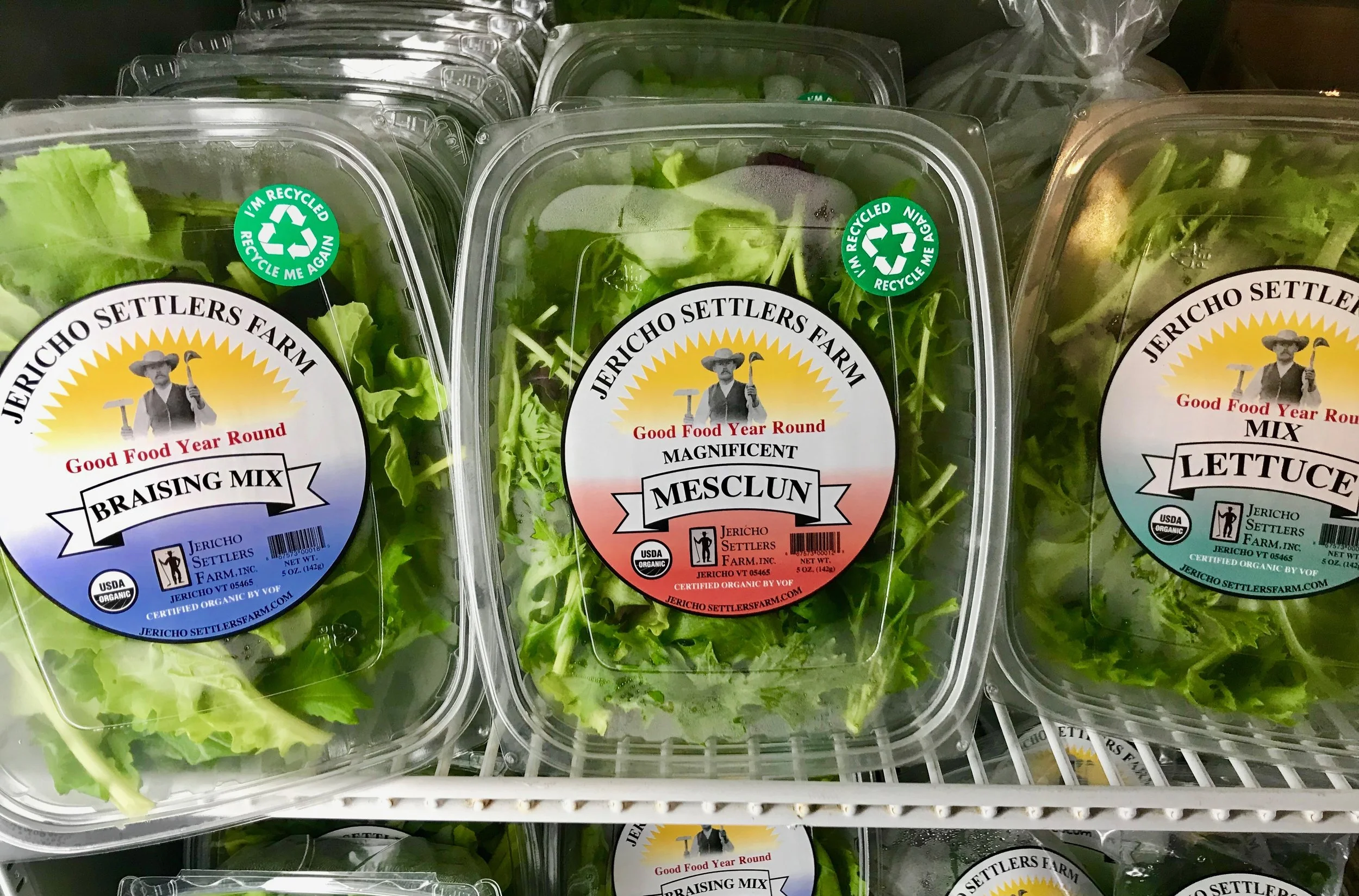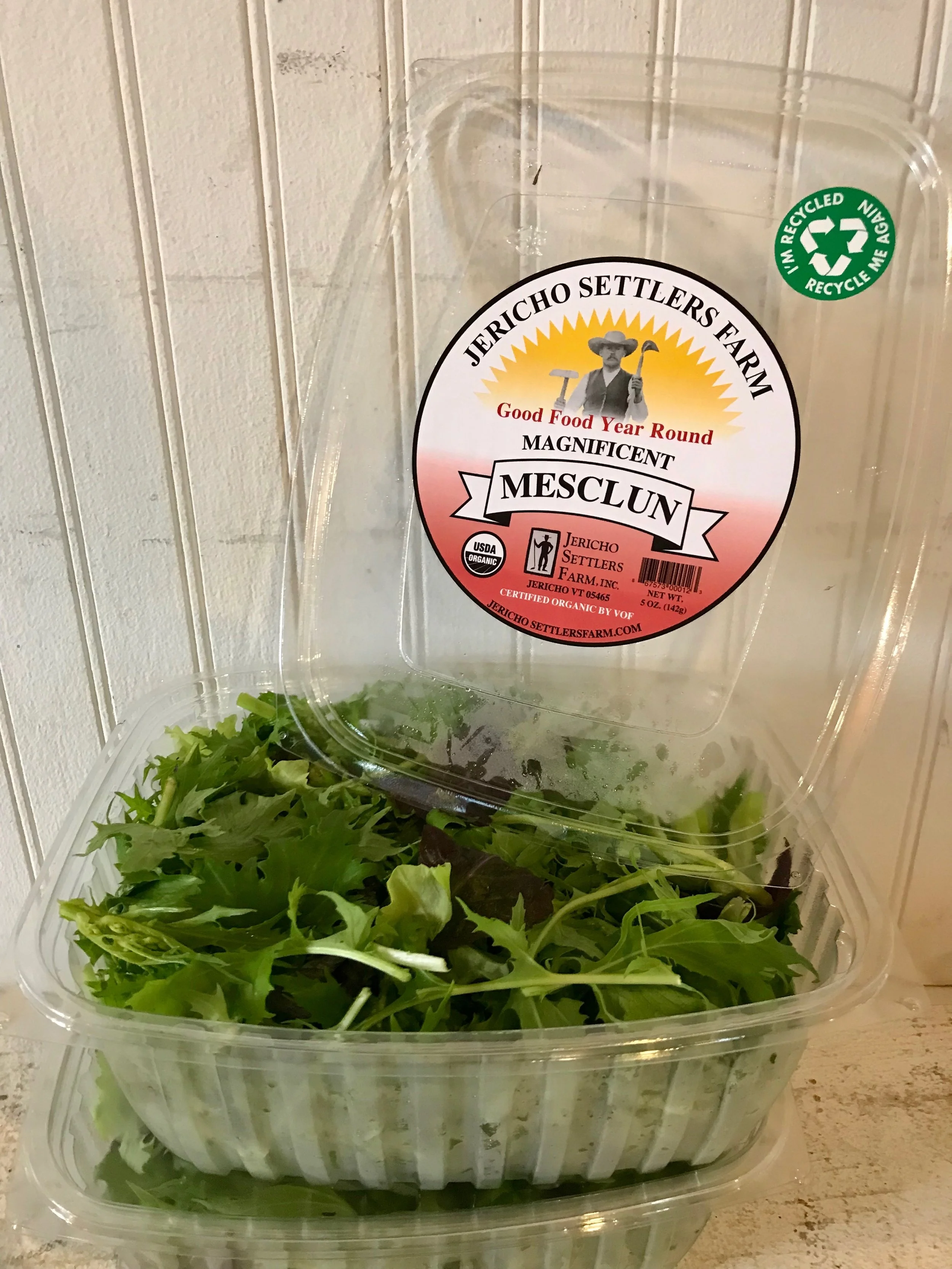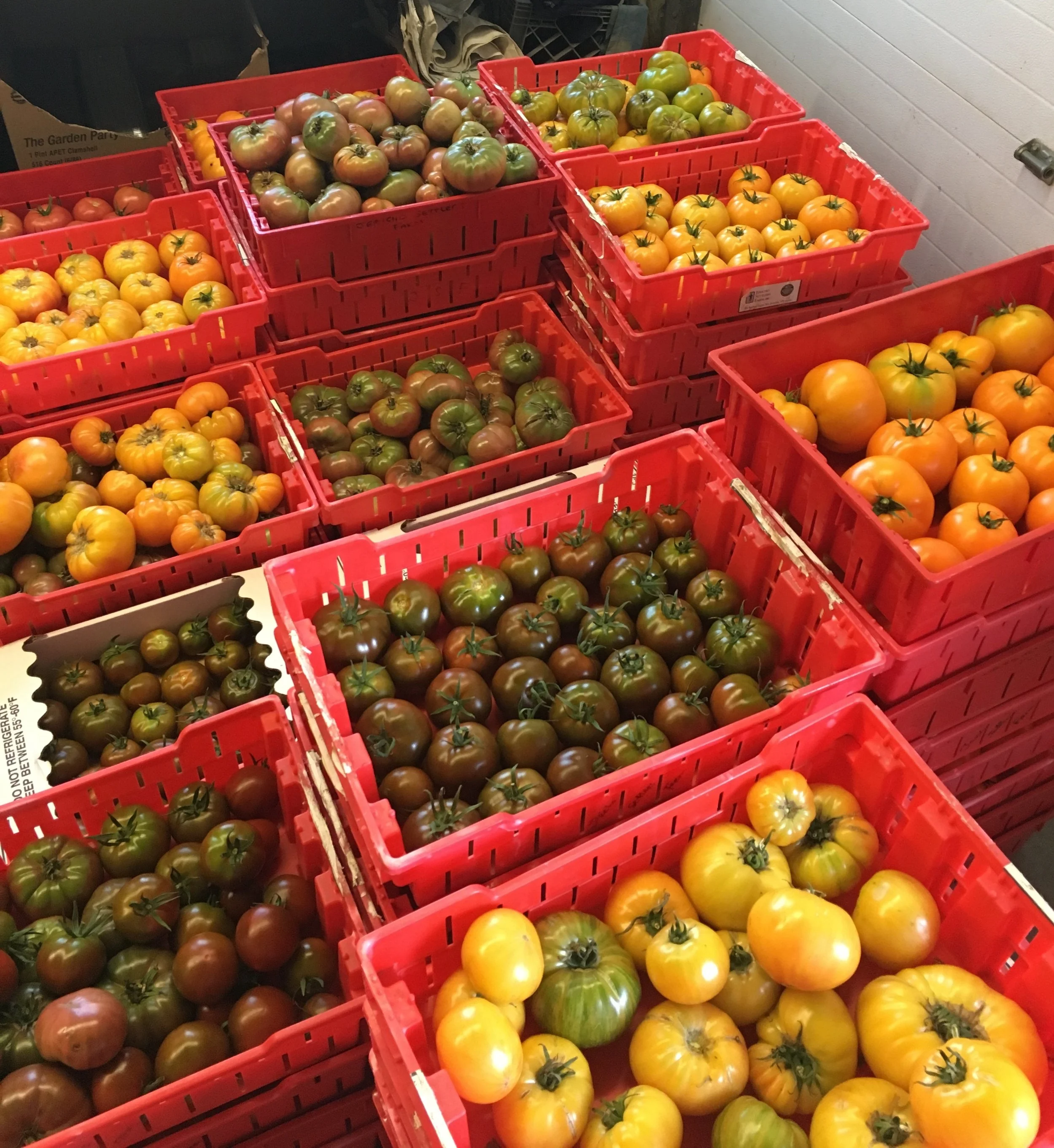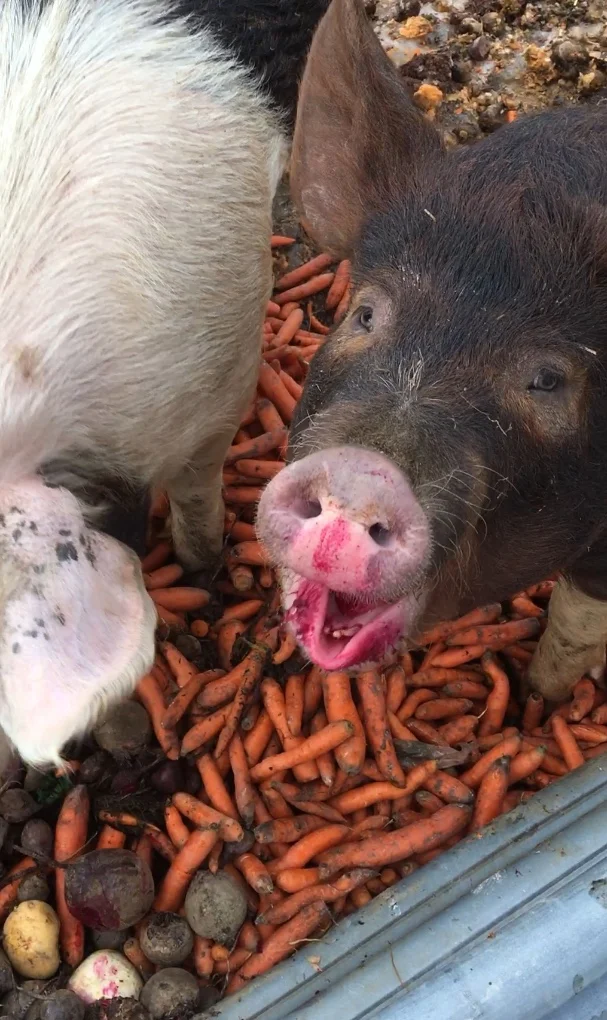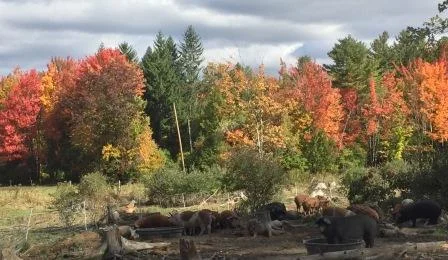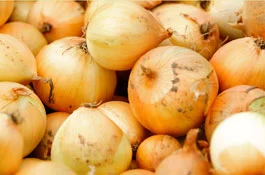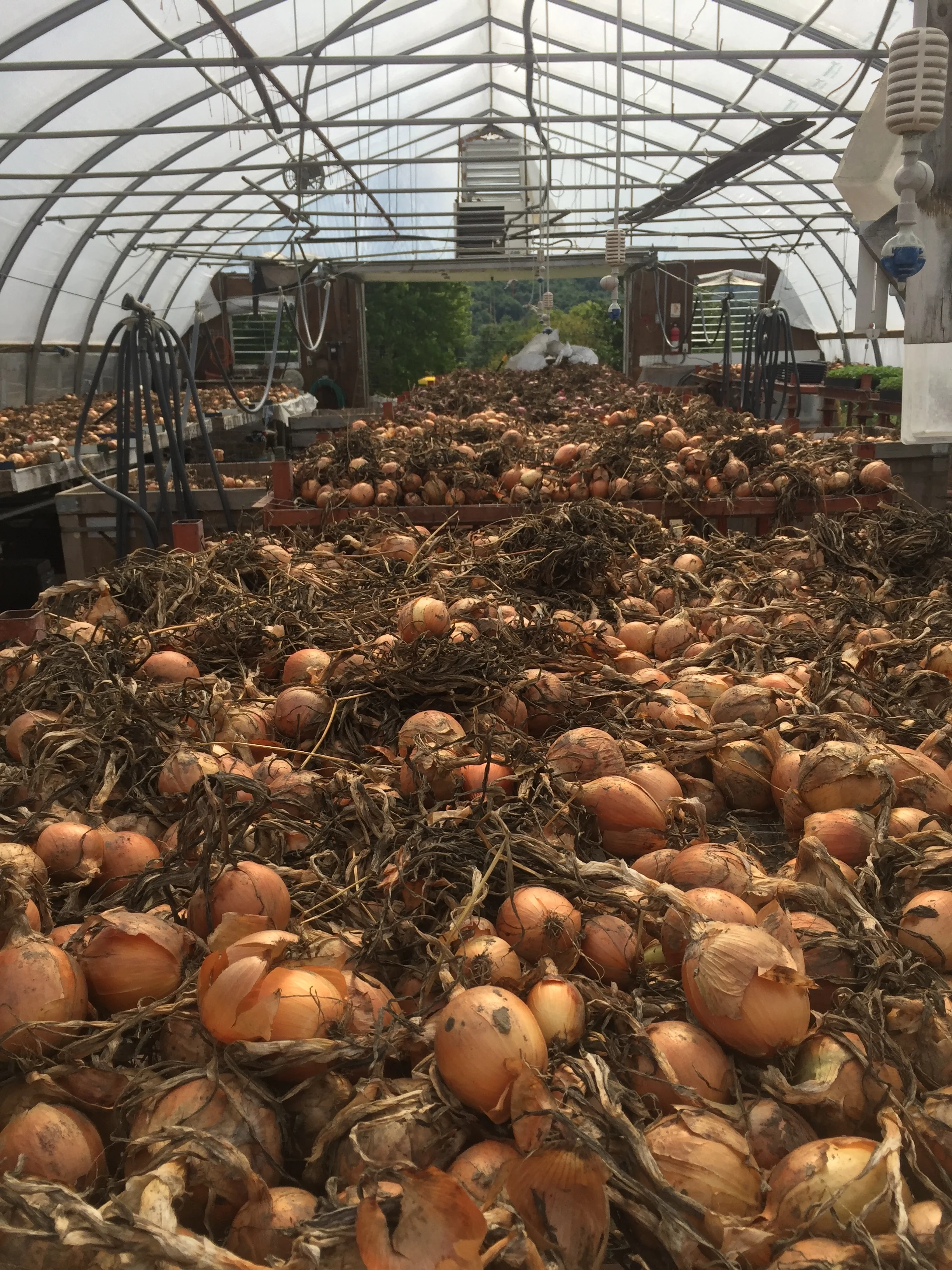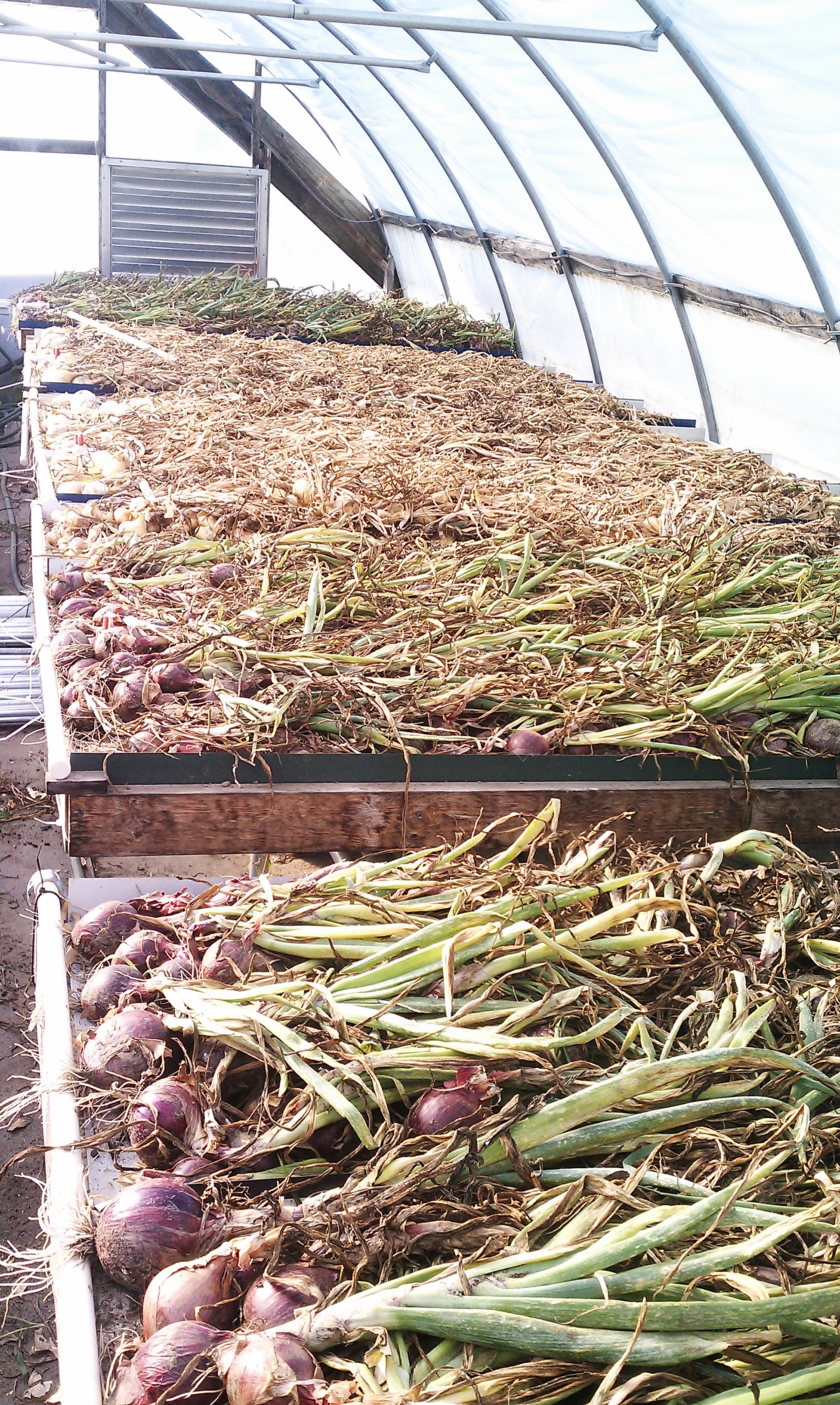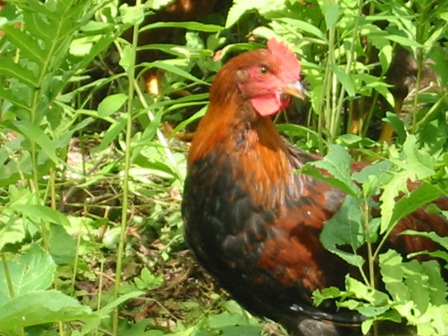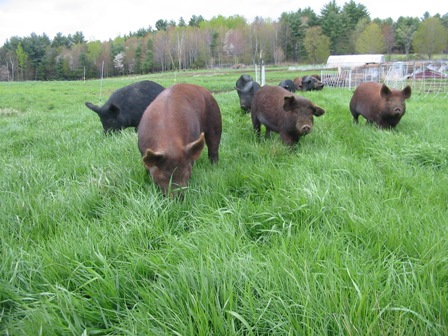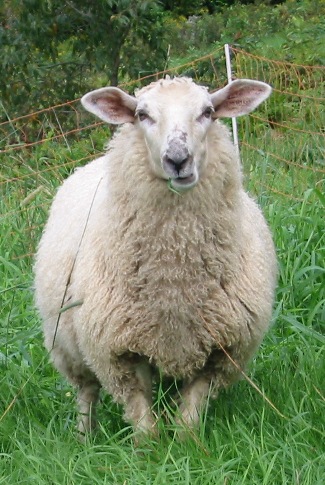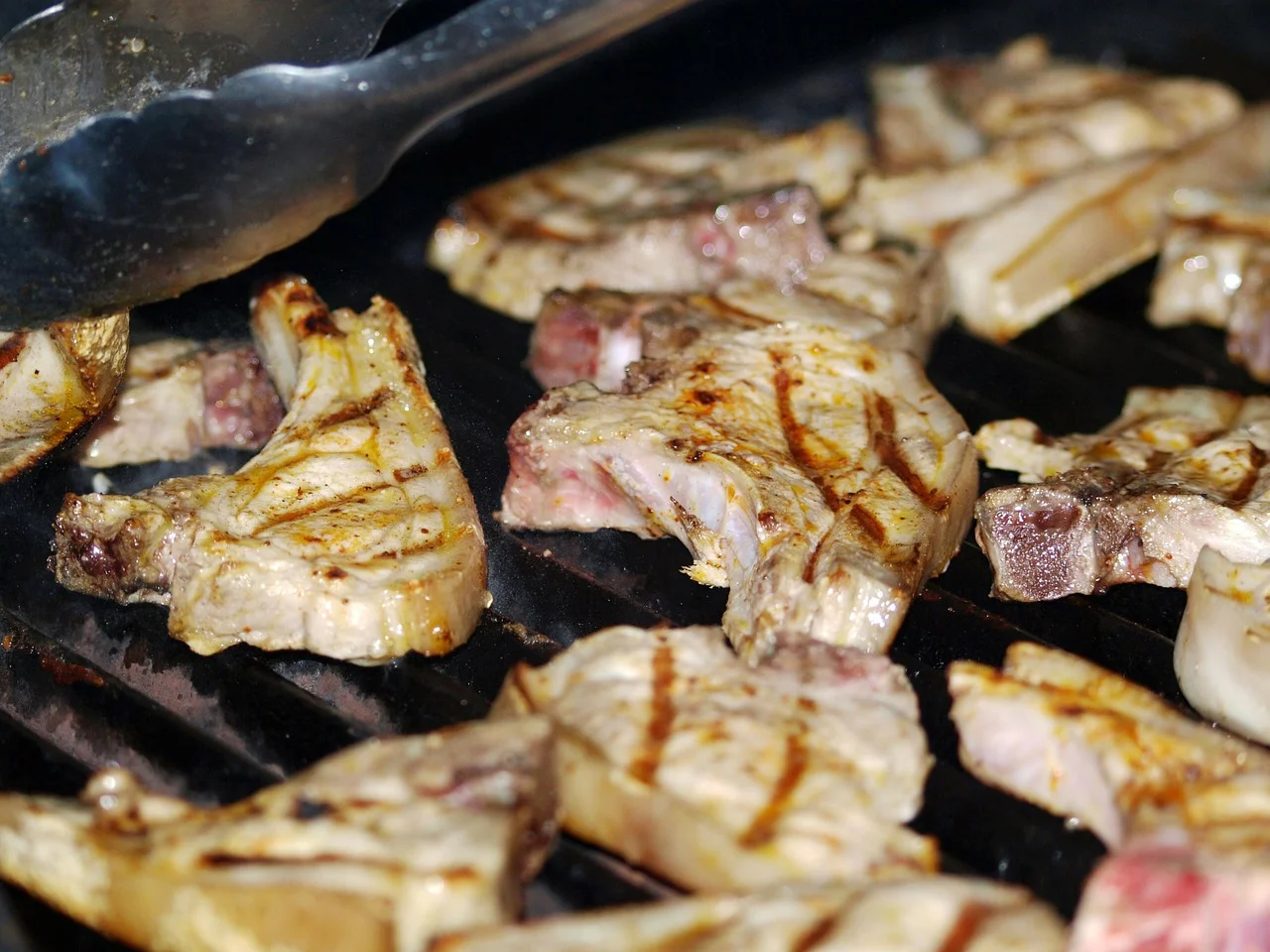Photo by Jameson Halnon Our flooded Richmond fields are in the background of this photo.
The home base of our farm is in Jericho, which fared fine during last week’s storms, but our main vegetable production fields are in Richmond in beautiful prime soils along the Winooski River. The river that created these fertile soils can only do so via episodic flooding of its large floodplain, and last week was one of those episodes - the second one in the last 12 years actually (but that's another story).
So we have lost 15 acres of summer vegetable production, including all our salad greens, summer beets and carrots, cabbages, and more. But the good news is we have just enough time in the growing season to reseed and get some fall and winter veggies grown that will see us (and you) through the winter. These next two months will be lean, but we have pieced together production from our hoophouses and fellow neighboring farms that did not flood to bring you a variety of veggies for the rest of the summer CSA and farmstand months.
Our hoophouses are still cranking out lovely summer crops like tomatoes, cucumbers, zucchini, basil and soon peppers. And we have already reseeded some higher ground with salad greens to bring those back into production in just a few weeks. So we will do our best to keep you well fed as we recover from this event.
Thank you for your support and commitment to local agriculture. Please read on about how to help us and many other farms that suffered even worse than us in this storm. Together we will pull through this, and that is just as it should be.
Summer carrots ready to harvest, but we will till them back into the soil without harvesting due to food safety requirements.
THE PATH TO RECOVERY
Help us through the next few months and eat good food year round in the process! Your purchase of a farmstand card and/or Winter CSA share now helps us maintain cash flow and get back into production after the loss of our summer vegetable crops in our Richmond fields.
Thank you for the outpouring of support and offers to help. Thankfully we do not have much "hands on" clean up do to in our Richmond fields. We do have a lot of economic recovery to do. We are replanning, reseeding, and rebudgeting to get through the next few months.
You can help in the following ways:
* Purchase a Farmstand card to use at our farmstand now or later, never expires and can be reloaded with more funds when you use it up. Purchasing one now helps us keep our cashflow going and our crew working.
* Purchase a Winter CSA share now. Yes we will have a full-on beautiful, delicious winter CSA program this year, since we have time to reseed the fall root crops and our many hoophouses are undamaged and ready for winter greens when the time comes. Purchasing a winter share now helps us cover our immediate lost produce sales.
* Purchase the products we do have for sale at our farmstand and partner stores and restaurants.
HELPING OTHER FARMS
We are heartbroken to see the severity of damage some of our fellow farmers experienced during this storm. From lost crops and livestock, to damaged equipment, barns and homes, scoured fields and lost topsoil, the extent of the damage seems daunting and overwhelming. Here are some ways we can help them:
* Donate to the NOFA VT Farmer Emergency Fund which offers grants to farmers for immediate disaster recovery
* Donate to the Vermont Farm Fund which offers no interest emergency loans for farm disaster recovery
Both of these funds are set up to directly aid Vermont farmers with quick response and little hassle to keep farmers farming in their time of crisis.
And most importantly, now and in the future, continue to purchase local food produced in your community and region. This is critical to the long term stability of our farms, our communities, and ourselves. Food resilience strengthens through the commitment of each one of us to learn about and support our local food producers.
With gratitude and many thanks,
Christa, Mark, and JSF Crew



